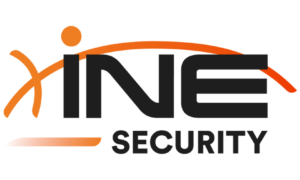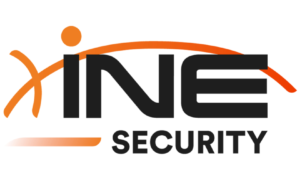Are you tired of constantly worrying about the ever-evolving cybersecurity threats that lurk in the digital realm? Look no further! In today’s technology-driven world, protecting yourself against malicious attacks has become an absolute necessity. From data breaches to ransomware attacks, it seems like every corner of the internet is teeming with potential risks. But fear not, because we have a knight in shining armor for you – Avast Internet Security! In this blog post, we will uncover some common cybersecurity threats and show you how Avast Internet Security can effectively shield you from their perils. Get ready to dive into a world where your online safety reigns supreme!
Introduction to Cybersecurity Threats and their Impact on individuals and businesses
In today’s digital age, the internet has become an integral part of our daily lives. From personal communication to business transactions, we rely heavily on the internet for various activities. However, with this increasing reliance comes a growing concern over cybersecurity threats.
Cybersecurity threats are malicious attacks or activities that can compromise the confidentiality, integrity, and availability of data or systems. These threats come in various forms and can target anyone connected to the internet, including individuals and businesses.
The impact of cybersecurity threats can be devastating for both individuals and businesses. For individuals, it can result in stolen personal data such as banking information, social security numbers, and passwords. This information can then be used for identity theft or financial fraud.
For businesses, the consequences of a cyber attack can be even more severe. It can lead to significant financial losses through stolen intellectual property or customer data. The cost of reputational damage and legal ramifications can also be damaging for businesses.
In addition to financial losses, cyber attacks also disrupt daily operations and cause downtime for organizations. This not only affects productivity but also damages customer trust and loyalty.
Common Types of Cybersecurity Threats
1) Phishing scams – Phishing is a fraudulent activity where attackers use deceptive emails or messages to trick victims into providing sensitive information such as login credentials or personal data.
2) Malware – Malware is malicious software designed to gain unauthorized access to systems or steal sensitive information from devices such as computers, smartphones, or tablets. It includes viruses, worms, trojans, and ransomware.
3) Distributed Denial of Service (DDoS) attacks – This type of attack floods a system or network with excessive requests, causing it to crash or become inaccessible to legitimate users.
4) Man-in-the-middle attacks – In this type of attack, hackers insert themselves between the communication of two parties to intercept and manipulate data without either party’s knowledge.
5) Insider threats – Insider threats are malicious activities initiated by individuals within an organization who have authorized access to sensitive information or systems.
6) Social engineering attacks – These attacks use psychological manipulation tactics to trick victims into divulging sensitive information or performing certain actions that benefit the attacker.
Preventive Measures
To protect against cybersecurity threats, individuals and businesses should take proactive steps to secure their devices and networks. Here are some preventive measures that can be taken:
1) Use strong passwords and enable two-factor authentication wherever possible.
2) Keep software and operating systems up-to-date with the latest security patches.
3) Use reputable antivirus software and firewalls on all devices connected to the internet.
4) Be cautious about opening emails from unknown senders or clicking on suspicious links or attachments.
5) Regularly back up important data to a secure location.
6) Educate employees or family members about cybersecurity best practices and the potential risks of cyber attacks.
Overview of Avast Internet Security and its features
Avast Internet Security is a comprehensive cybersecurity solution that offers protection against various types of threats such as viruses, malware, spyware, online frauds and phishing attacks. It is designed to provide advanced internet security to individuals and businesses by integrating multiple layers of security in one powerful package.
Key Features:
1. Anti-Virus:
Avast Internet Security comes with a robust anti-virus engine that continuously scans your device for any malicious programs or files. It not only detects known viruses but also proactively identifies potential threats before they can harm your system.
2. Firewall Protection:
The firewall protection feature monitors incoming and outgoing traffic on your network, keeping hackers at bay and preventing unauthorized access to sensitive data on your system.
3. Email Protection:
Emails are one of the most common vectors used by cybercriminals to spread malware or steal personal information. Avast’s email protection feature scans all incoming emails for suspicious attachments or links, ensuring that you do not fall prey to phishing scams.
4. Web Shield:
This feature blocks unsafe websites, web-based attacks, and malicious downloads. It also notifies you about any potentially harmful websites in search engine results so that you can avoid clicking on them.
5. WiFi Inspector:
With the rise of public WiFi networks, it has become easier for hackers to gain access to sensitive information transmitted over these networks. Avast’s WiFi inspector constantly monitors the security of all connected networks and alerts you if any vulnerabilities are detected.
Common types of cyber threats including malware, phishing, and ransomware
Cyber threats are becoming increasingly common in today’s digital world. As technology advances, so do the tactics and techniques used by cybercriminals to target individuals and organizations. It is essential to understand the different types of cyber threats that exist and how they can impact your personal or professional data security. In this section, we will discuss some of the most common types of cyber threats, including malware, phishing, and ransomware.
1. Malware:
Malware refers to malicious software created with the intention of causing harm or gaining unauthorized access to a computer system or network. This type of threat includes viruses, worms, spyware, Trojans, adware, and more. Malware can be transmitted through various means such as email attachments, infected websites, removable media devices like USB drives, etc.
Once installed on a device or network system, malware can have severe consequences. It can steal sensitive information like login credentials and financial data or corrupt important files leading to data loss. To protect against malware attacks effectively, it is crucial to have an anti-malware program like Avast Internet Security installed on your devices.
2. Phishing:
Phishing is a social engineering scam where cybercriminals use deceptive emails or messages to trick individuals into providing sensitive information like credit card details, login credentials for online accounts or perform fraudulent actions like transferring funds. These phishing attempts often appear legitimate and come from seemingly trustworthy sources such as banks or government agencies.
Phishing scams have become more sophisticated over time and can also involve other methods like voice phishing or vishing, where a scammer uses phone calls to obtain sensitive information. To avoid falling victim to phishing, it is crucial to be vigilant and never provide personal information or click on suspicious links in emails or messages.
3. Ransomware:
Ransomware is a type of malware that encrypts files on a computer or network, making them inaccessible to the user unless a ransom is paid. This threat has gained significant notoriety in recent years as cybercriminals increasingly use it to target organizations and demand large sums of money in exchange for decrypting files.
Ransomware can spread through infected email attachments, malicious websites, or vulnerable networks. It can cause severe disruptions and financial losses for individuals and businesses. To protect against this threat, it is important to regularly back up important data and have adequate security measures in place.
4. Man-in-the-Middle (MitM) Attacks:
MitM attacks occur when an attacker intercepts communication between two parties with the intention of eavesdropping, stealing information, or altering the communication’s content. This attack can occur on various levels – from intercepting wireless communication to infiltrating software systems.
MitM attacks are difficult to detect as the attacker stays hidden and can manipulate or steal sensitive data without being noticed. To prevent these attacks, it is crucial to use secure communication methods like HTTPS and VPNs.
5. Denial of Service (DoS) Attacks:
A Denial of Service attack aims to take down a network or website by overwhelming it with traffic, making it inaccessible to legitimate users. This attack uses multiple devices to create a botnet that continuously sends requests to the target system, eventually causing its servers to crash.
DoS attacks can significantly disrupt business operations and cost organizations thousands of dollars in downtime and recovery costs. To protect against DoS attacks, businesses should have a robust IT infrastructure and security protocols in place.
How Avast Internet Security protects against these threats through real-time scanning and advanced threat detection
As technology advances, so do the threats posed by cybercriminals. From malicious viruses and spyware to sophisticated phishing scams, there are numerous cybersecurity threats that can compromise our personal information and financial security. This is where Avast Internet Security comes in – a comprehensive cybersecurity solution designed to protect users from these ever-evolving threats.
One of the key features of Avast Internet Security is its real-time scanning capability. This means that as you use your computer, the software continuously runs in the background and scans any activity or files for potential threats. Whenever a suspicious file or program is detected, it is immediately flagged and either blocked or removed from your system.
Real-time scanning extends beyond just traditional malware detection. Avast also utilizes advanced behavioral analysis to detect new and emerging threats that may not yet be known to traditional antivirus programs. By monitoring the behavior of all programs on your device, Avast can spot any unusual or potentially harmful activities and take action before they can cause damage.
Another important aspect of how Avast Internet Security protects against cyberthreats is through its advanced threat detection capabilities. The software uses sophisticated algorithms and machine learning to identify patterns and anomalies in data that may suggest a malicious attack. By constantly analyzing this data, Avast can proactively identify new types of threats before they have a chance to spread.
Additional features such as firewall protection and identity theft prevention
As cybersecurity threats continue to evolve and become more sophisticated, it has become increasingly important for individuals and businesses alike to take proactive measures to protect their online presence. One essential tool in the fight against cyberattacks is internet security software, which provides a range of features to safeguard against potential threats.
One such software is Avast Internet Security, which offers advanced protection against various cyber threats. In addition to its primary function of providing antivirus and malware protection, Avast also includes additional features such as firewall protection and identity theft prevention. These features are crucial in keeping your personal information safe from malicious actors.
Firewall protection is an essential element of any internet security program. It acts as a barrier between your computer and the internet, monitoring all incoming and outgoing network traffic. The firewall blocks potentially harmful connections while allowing safe ones through, thus protecting your system from viruses, spyware, and other types of malicious software.
In today’s digital age where we rely heavily on the internet for our daily activities, including online banking, shopping, and communicating with others, having a strong firewall is critical in preventing unauthorized access to sensitive data. Avast’s firewall feature goes beyond the standard Windows Firewall by providing advanced capabilities that enable you to have finer control over which programs or services can access the internet.
Another growing concern in terms of cybersecurity is identity theft. This occurs when someone steals personally identifiable information such as social security numbers, credit card numbers, or login credentials to gain unauthorized access to financial accounts or commit fraud using your identity.
Real-life examples of how Avast has prevented cyber attacks and data breaches
There are countless examples of cyber attacks and data breaches that have occurred in recent years, highlighting the increasing importance of protecting our digital devices and online activities. Fortunately, Avast Internet Security has been at the forefront of combatting these threats with its comprehensive protection features. In this section, we will delve into some real-life examples of how Avast has successfully prevented cyber attacks and data breaches.
1. Ransomware Attack on a Small Business
One common type of cyber attack is ransomware, where hackers gain access to a victim’s computer or network and encrypt their files until a ransom is paid. Many small businesses have fallen victim to such attacks, causing significant financial losses. One such business was a dental practice in Virginia that was hit with a ransomware attack leading to the loss of patient records and other important documents.
Fortunately, the dental practice had Avast Internet Security installed on their systems. As soon as the malware attempted to infect their computers, Avast’s Real-Time Protection feature immediately identified and blocked it from executing further actions. This quick response prevented any files from being encrypted, saving the business from having to pay a hefty ransom fee.
2. Data Breach at an Educational Institution
Data breaches are another prevalent type of cyber threat that can have severe consequences for victims. In 2018, an educational institution fell victim to a data breach where sensitive information such as names, addresses, birth dates, and social security numbers were accessed by hackers through a vulnerable web application on their site.
Thankfully, the institution had Avast Internet Security installed on their servers. The software’s powerful firewall and web shield features detected and blocked any attempts by the hackers to exploit vulnerabilities in their web application. As a result, the institution’s sensitive data remained secure and out of reach from cybercriminals.
3. Phishing Scam Targeting Online Banking Users
Phishing scams are another common form of cyber attack where a fraudulent entity attempts to obtain sensitive information from unsuspecting victims, usually through email or fake websites. In one such instance, a well-known bank in the UK was targeted by scammers who sent out fake emails pretending to be from the bank, requesting users to update their account details for security purposes.
Luckily, many customers of this bank had Avast Internet Security installed on their devices. The software’s anti-phishing feature was able to identify the fake emails and warn users not to click on any links or provide any personal information. This saved many customers from falling victim to the scam and losing money from their accounts.
Tips for using Avast Internet Security effectively to maximize protection
Avast Internet Security is a comprehensive antivirus software that offers advanced protection against a wide range of cybersecurity threats. However, to ensure maximum protection, it is essential to use the program effectively and keep up with its latest features. In this section, we will discuss some valuable tips for using Avast Internet Security effectively to maximize your protection.
1. Keep the Program Updated:
The first and most crucial tip for using Avast Internet Security effectively is to keep the program updated at all times. Cybercriminals are always looking for new ways to exploit vulnerabilities in software, and updates often include important security patches that protect against these threats. Avast regularly releases updates with bug fixes, improvements, and new features that enhance the overall security of the program. Therefore, make sure to check for updates frequently and install them as soon as they become available.
2. Enable Real-Time Protection:
One of the key features of Avast Internet Security is real-time protection, which constantly monitors your system for any suspicious activity or malware threats. This feature automatically scans any files or programs that you download from the internet before allowing them to run on your computer. It also comes with a behavior shield that detects unusual behavior from applications or processes and stops potential attacks in their tracks. To maximize protection, make sure real-time protection is always turned on.
3. Use Firewall Protection:
Firewalls act as a barrier between your computer and external networks by controlling incoming and outgoing traffic based on certain rules. Avast Internet Security comes with an advanced firewall that offers an additional layer of protection against malicious connections and intrusion attempts. It also allows you to customize your network and application rules, making it easier to block or allow specific traffic. Ensure that your firewall is enabled and regularly check its settings to ensure it’s providing maximum protection.
4. Schedule Regular Scans:
Scanning your computer regularly is essential to identify any existing threats or malware that may have slipped through your real-time protection. Avast Internet Security offers various types of scans, such as quick scan, full system scan, and custom scans, which you can schedule at a convenient time. It’s recommended to schedule regular full system scans for maximum protection.
5. Customize Your Settings:
Avast Internet Security offers various customization options that allow you to set preferences based on your specific needs. These include changing the level of sensitivity for different security features, adjusting the frequency of program updates, and deciding how often automatic scans should run. Take some time to review these settings and configure them according to your preferences for increased protection.
6. Enable Anti-Phishing Protection:
Phishing attacks are one of the most common methods used by cybercriminals to steal sensitive information from unsuspecting victims by disguising themselves as legitimate sources. Avast Internet Security comes with anti -phishing protection that automatically identifies and blocks scam websites, protecting you from falling prey to these attacks. Make sure this feature is enabled at all times to safeguard against phishing attempts.
7. Use Additional Tools:
Apart from the standard antivirus and security features, Avast Internet Security offers several additional tools that can enhance your overall protection. These include a secure browser for safer online transactions, a data shredder to permanently delete sensitive files, and a password manager to securely store your login credentials. Don’t overlook these tools and consider incorporating them into your cybersecurity routine for maximum protection.
Conclusion
By following these tips, you can use Avast Internet Security effectively and maximize your protection against cyber threats. Remember to keep the program updated, enable real-time protection and firewall, schedule regular scans, customize your settings, enable anti-phishing protection, and utilize additional tools for enhanced security.



































